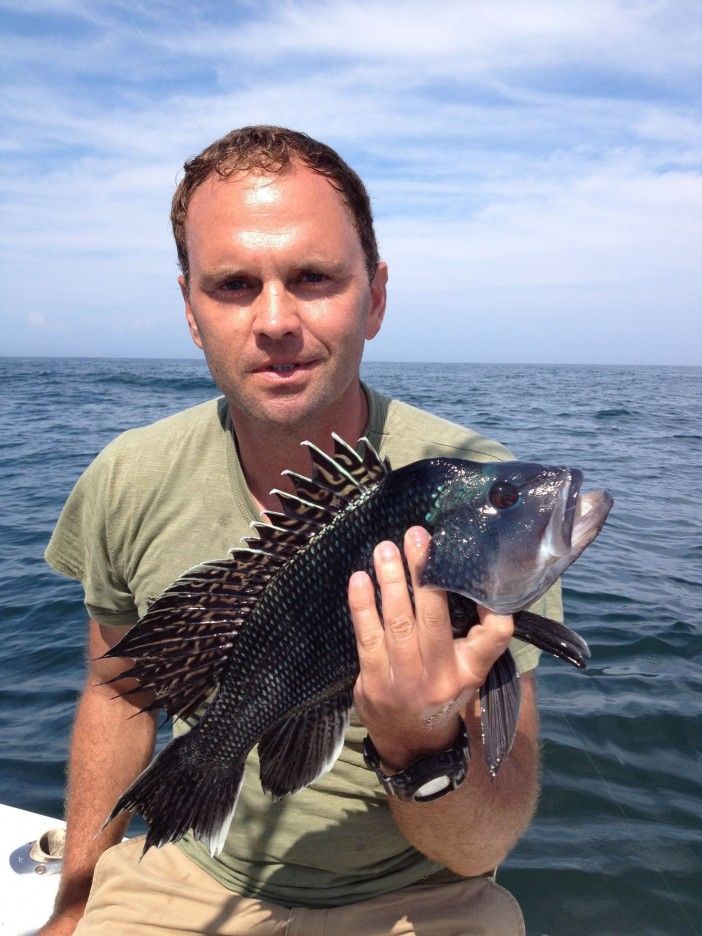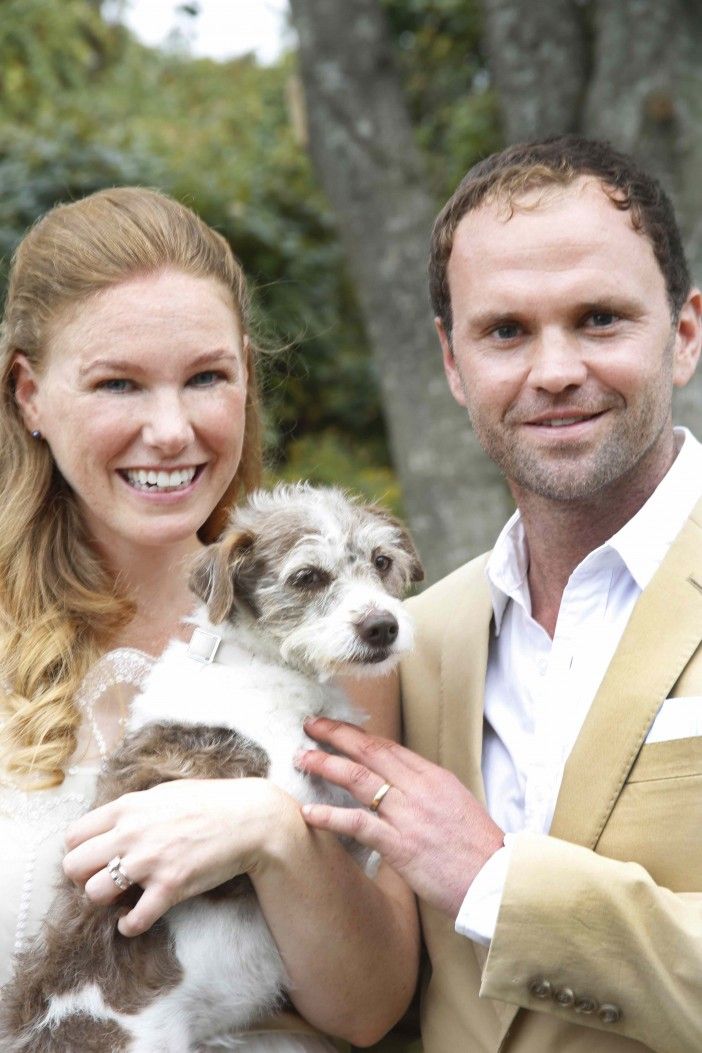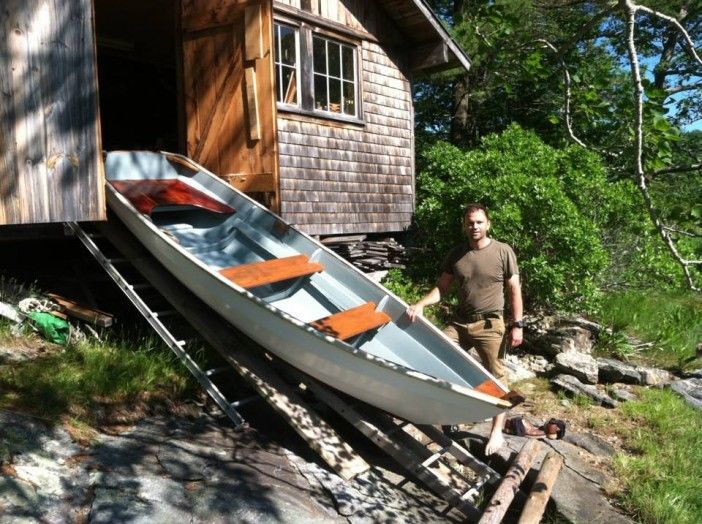Neighbor Michael Crocker Talks Sustainable Fishing, International Travel & Being Outdoorsy In The City


At a point earlier in his life, it may not have seemed that Michael Crocker would end up in Park Slope. Growing up, he always loved international travel, and spent a good part of his adult life overseas.
“My dad was a pilot, so I got deeply discounted airfare,” he says. “He used to joke that I had more air miles than he did.”
In fact, the job that landed him in our neighborhood is one that keeps him traveling. As a communications advisor to a group of small island nations at the United Nations, he spends a good portion of his year in different corners of the globe, from Peru to Poland, Qatar to Cancun. These days, though, he doesn’t get to enjoy the same aspects of travel as he used to — namely, meeting ex-pats who’ve had a life similar to yours outside of that context. Now, it’s mostly down to work on climate change issues.
“They’re marathon negotiations so it’s pretty long hours — you kind of want to go to bed instead of enjoy the local beer,” he explains. “I still do, though, and always regret it.”
The job is housed in New York, so when he had to move here three years ago, he needed to find a place to live. Though he’d seen much of the world, he wasn’t particularly family with NYC — he’d been on a trip as a Boy Scout, but his high school years and those after college were spent in Boston, one of the most urban environments he’d lived in after attending Bates College in Maine and the University of Montana Graduate School of Journalism. Moving from such an outdoorsy existence to NYC, the thought did cross his mind that it might not be the best fit, but he felt an instant connection.
“I liked it when I visited, and I loved it immediately when I moved here.”
Ending up in Park Slope was just happenstance, a sublet of a friend of a friend’s, and he says knew nothing of Park Slope’s stereotypes.
“And now they all apply to me,” he jokes.
That’s because not long after he moved to the neighborhood, he met his now-wife Catherine, who lived, it turned out, just a few blocks away from him.
“We met on the street,” he says. “We were going to the same bar. The rest is history!”

The “rest” now includes their infant son Jack and their dog Shayne, which feeds into one of the stereotypes they feel they’ve lived up to: stopping to take lots and lots of pictures — “Though we did that with Shayne, too.” They weren’t, however, sharing those photos with quite the same enthusiasm as some stereotypical parents.
“I was uncomfortable about putting pictures of Jack on Facebook, and I was getting lots of requests,” he says. “‘The point of Facebook is to put up pictures of your baby!’ people would tell me. So I finally gave in and put a video up, and that got vastly more attention that my post about my New York Times op-ed piece. Like 100 times as much. I guess I’m not surprised, it just shows where people’s priorities are.”
Jack’s cuteness may outrank it, but Michael’s recent op-ed, which argues for changes in quotas that might help save the declining striped bass population, still deserves a look. An avid fisherman — which was one of the first things he and Catherine found they had in common — he views the fishing industry through an ecological lens. After college he worked on commercial fisheries issues; he served as a fisheries policy advisor to Barack Obama’s presidential campaign in 2007; and his book, Sharing the Ocean: Stories of Science, Politics, and Ownership from America’s Oldest Industry, covers fisheries science. In all his time studying it, he says that unfortunately, things have only gotten worse.
“The change is pretty concerning,” he says. “We seem to make the same mistakes over and over again.”
He explains there are new things affecting some of the vulnerabilities that all fish species have, climate change included, but that what’s lacking is a system that can help correct that.
“The governance systems that we’ve constructed to manage resources, and ourselves — Congress included — no longer seem to be up to the task,” he says. “That’s the root of why we make the same mistakes over again — we’ve designed a system to do that.”
His concerns are less with commercial fishing than they are with recreational fishing, where he believes the mortality rate may be close to three times that of commercial.
“We’ve designed a system that allows more recreational fishermen to go, and that’s just a social decision that is legitimate. People need to decide how they want to make use of the resource,” he says. “Not to say you can’t go fishing or shouldn’t go fishing, but maybe two fish per day for recreational is too much, and 28 inches is too small. A lot of avid recreational fishermen and charter boat captains that I know are asking people to pledge one fish at 28 inches, which is what I’ll be doing, and I think that makes sense.
“Fishing is important, ending it isn’t the answer,” he continues, “but we’re at a point where we need to lay off a bit. Then fish can be exquisitely renewable, and they’ll come back when we give them a break. It’s the right thing to do.”

Michael and Catherine do a lot of fishing off the east end of Long Island, near the Montauk home of Catherine’s parents. Her father, who loves to fish but doesn’t actually enjoy eating it himself, tends to put Michael on scaling duty.
“It’s his boat, so captain’s rules,” he says. “I’m the official cleaner, and yes, I’ve definitely cut my fingers. I’ve gotten better at it.”
Catherine says Michael is an amazing cook, but he admits he doesn’t get as much time to do it as he’d like — though he’s certainly the chef of the family.
“When I first moved in, Catherine was not cooking at all,” he says. “So I started up, and after a month, the stove didn’t work, and we got a little worried. We called the gas company, and they told us they’d shut off the gas. She’d been using so little, that they’d turned it off because they didn’t think anyone was there. But she didn’t notice, because she was, at most, boiling water for tea every once in a while.”
“I like being the sous chef now,” she says.
“I like that division of labor,” he says, noting that Catherine also does the dishes.
When they eat out, they have some Park Slope stand-bys — Al Di La or Stone Park Cafe for fancier outings, the Tito’s tacos at Rachel’s and platters from Pita Pan for regular take-out, and Surfish, because “when it gets warm out, the outside patio is awesome,” he says. Their son’s stroller has made negotiating restaurants tricky, but they say they’ve found ways to live up to another Park Slope stereotype: “We take Jack to The Gate all the time.”
Spending time outdoors, whether drinking a beer in the neighborhood or out on a boat in the Atlantic Ocean, is clearly important to Michael, and being so close to Prospect Park has been perhaps the best aspect of living in this neighborhood. He runs there when he can, the family takes Shayne for walks, and it’s become something like an extension of their one-bedroom apartment.
When Jack grows up, they may consider moving to a bigger place, but “there are people in a lot more cramped situations than us right now,” he says. But where to, and when? “It just depends. Both of us have an outdoor streak, so there’s that part of it, but if we stay in the city, we’d definitely stay in Park Slope if we could.”
Do you know a Park Slope neighbor we should feature on the site? From someone who just published a book to your favorite supermarket cashier, we’d love to share their stories with the community! Send your suggestions to editor@bklyner.com.
Photos via Michael Crocker




